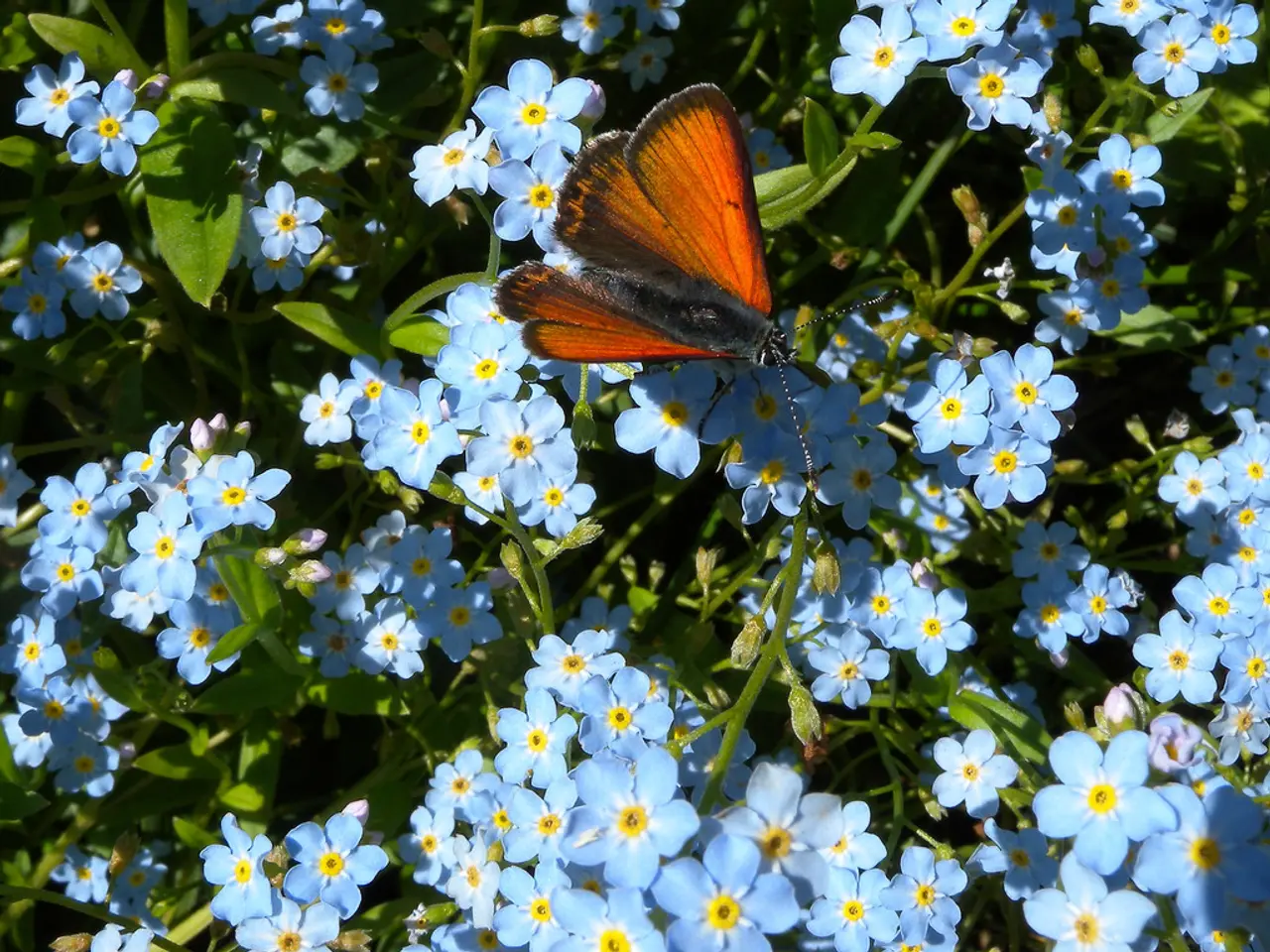Gardening, Collecting, and Passionate Hobbyists Rejoice: Comprehensive Guide to Agastache Plants
Caring for Agastache Plants: A Guide to Blue Fortune and Firebird Varieties
Agastache plants, known for their vibrant flowers and pollinator appeal, are a popular choice for gardens across the globe. Two of the most popular varieties are the Blue Fortune and Firebird Agastache. This article provides a comprehensive guide on how to care for these plants to ensure their vigor and prolonged blooming.
Blue Fortune Agastache (Hummingbird Mint)
The Blue Fortune Agastache grows between 24-36 inches tall and 18-24 inches wide, producing lavender-blue flowers from summer to fall. This variety prefers full sun, with at least 6 hours of sunlight daily, and well-drained soil that can tolerate dry and even lean soils. It is drought-tolerant once established and requires average to low moisture.
Spacing Blue Fortune Agastache plants should be around 2 to 3 feet apart. Fertilizing is not recommended as overly fertile soil can cause floppy growth. During winter, clean up old foliage, but no special care is needed. The plant attracts hummingbirds and pollinators while being deer and rabbit resistant. It is suitable for garden borders, containers, cut flowers, and pollinator gardens.
Firebird Agastache
The Firebird variety shares similar growing requirements typical for Agastache species, which generally prefer full sun, well-draining soil, and moderate water. This variety is known for its tolerance to heat and drought once established and prefers infertile to average soil (neutral to slightly acidic pH) with low fertility to maintain compact, well-branched plants.
Deadheading spent blooms is essential to promote prolonged flowering, and the plant has a perennial growth habit with top growth dying back to dormancy in winter and possible division every 2-3 years in early spring for renewal.
| Requirement | Blue Fortune (Agastache) | General Agastache / Firebird* | |--------------------|----------------------------------|---------------------------------------| | Sunlight | Full sun (>6 hours) | Full sun | | Soil | Well-drained, tolerates dry soil | Well-drained, lean to infertile soil | | Water | Moderate to low; no wet conditions| Moderate to low; drought-tolerant | | Fertilizer | Not recommended | Avoid excess fertility | | Spacing | 2–3 feet apart | Similar spacing | | Maintenance | Clean up old foliage in late winter; deadhead | Deadhead to promote blooms; divide every 2-3 years| | Wildlife benefits | Attracts hummingbirds, deer/rabbit resistant | Similar traits | | Height x Width | 24-36" x 18-24" | Medium height, varies with variety |
(*Specific details for Firebird are inferred based on typical Agastache care, as no direct source was found.)
These conditions produce vigorous growth, prolonged blooming, and support pollinators while minimizing disease and pest problems.
In colder climates, mulch lightly in fall and leave stems standing to protect the crown and provide overwintering sites for beneficial insects in Agastache plants. Aphids or spider mites might be attracted to stressed Agastache plants, but these can be addressed with a gentle spray of water or organic insecticidal soap.
Poor drainage is the leading issue for Agastache plants, often causing root rot or crown rot, especially in clay-heavy soils or during prolonged wet conditions. Ensuring proper soil structure and raised planting beds can prevent this. Powdery mildew may appear on leaves in humid climates or where air circulation is poor in Agastache plants. This can be managed by spacing plants properly, watering at the base, and removing affected foliage.
Agastache plants can be grown from seed, transplant, or division. Minimal feeding is recommended for Agastache plants to prevent lush foliage and floppy stems at the expense of flowers. A light application of compost or a balanced, slow-release fertilizer in spring is sufficient.
The Blue Fortune Agastache plant is a cross between Agastache rugosa and Agastache foeniculum. Avoid fertilizers high in nitrogen for Agastache plants as they can inhibit flowering. Look for products with a balanced NPK ratio or slightly higher phosphorus to promote blooms. Organic options like worm castings or compost tea are also suitable.
Deadheading spent blooms encourages continued flowering in Agastache plants. In late fall or early spring, cut back stems to tidy up the plant. Agastache is a genus of about 22 species, most native to North America. Agastache plants flower from mid-summer through fall in shades of purple, pink, orange, blue, and red.
Pruning in spring helps remove any winter-damaged stems and allows for a fuller, bushier habit in Agastache plants. Agastache plants attract bees, butterflies, and hummingbirds. The foliage of Agastache plants is often aromatic-minty, licorice-like, or bubblegum-scented. Agastache seeds require light to germinate and benefit from cold stratification. The Agastache Firebird plant thrives in full sun and lean soils.
- The Blue Fortune Agastache plant, popular for its lavender-blue flowers, grows well in gardens with at least 6 hours of sunlight daily and well-drained soil that can tolerate dry conditions.
- The firebird variety of Agastache shares similar preferences for full sun and well-draining soil, but it favors leaning towards infertile soil to maintain compact growth.
- To ensure prolonged blooming for Agastache plants, deadheading spent blooms is essential for both the Blue Fortune and the Firebird varieties.
- Agastache plants, which attract pollinators, can be grown from seed, transplant, or division and are suitable for various lifestyle choices, such as home-and-garden, gardening, and even home-based art projects, due to their attractive design and variety of colors.
- In addition to their vibrant flowers, Agastache plants offer aromatic foliage with scents ranging from minty to licorice-like, contributing to their popularity in the home-and-garden and industry sectors.




